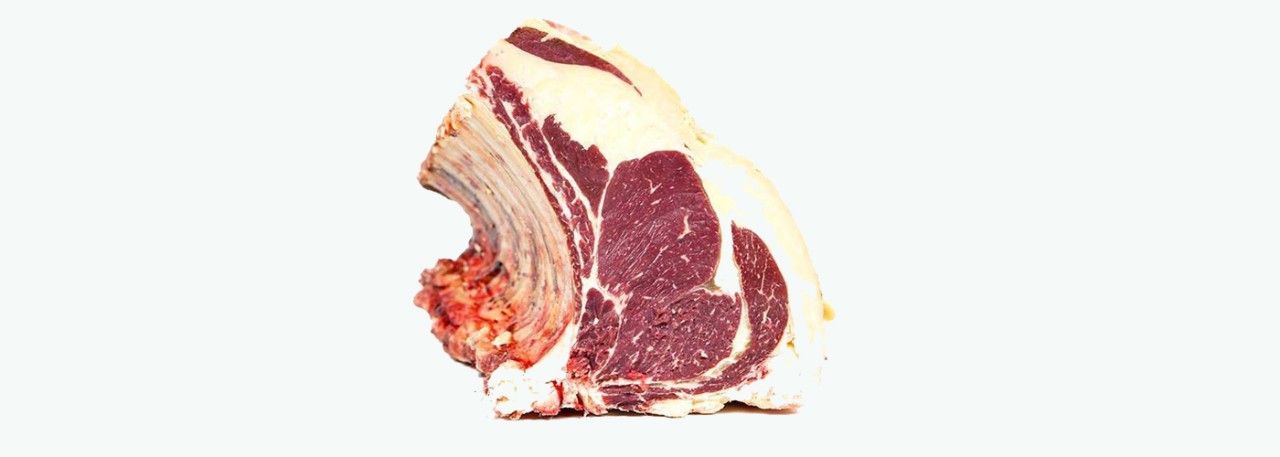.png.transform/rendition-xs/image_image%20(1).png)
Carne de Cantabria PGI
Beef from animals from the Cantabrian family of breeds (convex profile chestnut-colored bovines): Tudanca, Monchina and Asturian; Highland Brown absorbed into this stock and the Limousin breed, adapted to the local environment, and crosses thereof.
Tasting notes
General characteristics of the different types of meat:
-Ternera (heifer calf): pale pink/pink meat, with evenly distributed pearly white fat, and firm, slightly moist muscle.
-Añojo (yearling) : pale pink/pink meat, with pearly white fat, and firm, slightly moist muscle.
-Novilla (heifer): pale red/red meat, with creamy-colored fat, firm, slightly moist muscle with fatty striations.
-Buey (steer): pale red/red meat, with creamy-colored fat, firm, slightly moist muscle, with fatty striations.
Production / Processing method
The breeds used for meat production are well adapted to the PGI area, leading to a productive ecological equilibrium between animals and environment. Herds are based on dams suitable for meat production, well integrated into the environment (particularly those of native breed Tudanca, equipped to capitalize on the resources offered by mountain areas). The animals graze during those months when the herbage is growing, on both low meadows and mountain pastures, and are stabled during the winter. In autumn and early spring, the cattle graze pasture close to the holdings during the day, they move up to mountain pastures in mid-May.
Calves are generally born at the beginning of spring, and stay with their dams for five to seven months, during which time they are weaned and start to forage, either field grazing or dried fodder indoors. During the finishing stage, feed is supplemented with authorized concentrates.
Processing includes slaughter and the dressing and cutting of the carcass before the certified meat is shipped. These stages must take place in slaughterhouses and cutting plants that meet the technical and health standards required by current legislation and must not take place at the same time as that of other, non-registered animals.
After slaughter, the carcasses are aired and then treated for preservation. Neither registered carcasses nor cuts thereof may be frozen, nor may they be cut up at the same time as other, non-registered carcasses. Likewise, storage must be carried out in such a way as to prevent confusion between registered and non-registered meat.
Quartering facilities must issue quarters and cuts of meat packed and properly labeled with numbered labels issued by the inspection body.
Geography / Relief and climate
The climatic and geographical conditions in Cantabria account for the existence of extensive areas given over to pasture where, traditionally, livestock rearing has been carried out on a large scale, and with close ties to the land. The six natural regions that make up the Autonomous Community are located between the coast and the mountain, with the result that the entire region can be classified as Atlantic Spain.
It is delimited to the north by the coastal strip, and to the south by the mountains of the Cordillera Cantábrica. Another mountain chain, the Sierra del Escudo de Cabuérniga, lies centrally in an east-west direction, separating the coastal area, with its moderate slopes and altitudes, from the interior, with its steeper, higher hills.
The climate is Atlantic mountainous, with abundant and frequent rainfall. The mountains serve as a screen, fostering condensation and tempering the climate, which is wet and warm, rainy Atlantic along the coast and colder and more extreme towards the south and at higher altitudes, where it also rains a lot all year round.
Regulatory Council
Consejo Regulador de la IGP Carne de Cantabria
C/ Héroes 2 de Mayo, 27
39600 Muriedas
Cantabria
Tel: (+34) 942 269 855
odeca@cantabria.es
www.alimentosdecantabria.com
Sources:
Calves are generally born at the beginning of spring, and stay with their dams for five to seven months, during which time they are weaned and start to forage, either field grazing or dried fodder indoors.


- /content/dam/en/icex-foodswines/images/products/fresh-meat/carne-de-cantabria-pgi/Carne%20de%20Cantabria%20PGI%20carr1.jpg
- /content/dam/en/icex-foodswines/images/products/fresh-meat/carne-de-cantabria-pgi/Carne%20de%20Cantabria%20PGI%20carr2.jpg

Muriedas (Cantabria)
